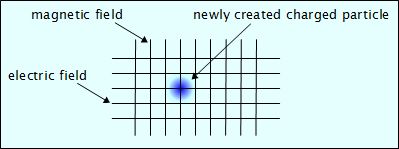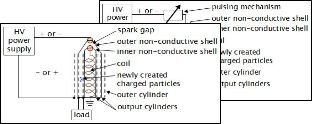Note: If you read these pages prior to
December 2, 2010 then you saw a version that relied on summing
the wave amplitudes for particle creation. In fact, the theory
and calculations should have been summing the square of the
amplitudes. The theory page has been
revised and the calculations
pages removed until methods for doing the calculations can be
found.
These pages discuss my theory, designs and experiments for
converting vacuum energy into electrical energy. The main approach
here is to create charged particles out of the vacuum, short or long
lived particles. Some energy would be required for the creation but
much of it would come from the energy of the vacuum. The result
would be voltage and current that cost less than the power that
was supplied by the device. Note that this is an open systems
approach. No energy creation is expected to happen. This is
simply a conversion of energy from one form to another.
The basic hope is that by providing an electric field and
a magnetic field of suitable geometries, and fluctuating them in
the correct manner, particles will be created. Appropriate
hardware will need to be in place to capture and use those
particles. The purpose of the electric field is to shape the
vacuum and the purpose of the magnetic field is to supply the
initial spin for the particle.
Figure 1. Basic idea.
 |
|
Click here for a more detailed explanation
of the above vacuum energy tapping approach and why it might work.
Design ideas for tapping vacuum energy
Using the above principles it's possible to produce some
basic designs. Click here
for a page going over various design ideas
(Added the 'general idea' to the top of
the page for clarification - March 31, 2011).
Other design ideas can be found in correlations with alleged
working devices. One such example is the testatika. Click
here for
how particle
creation may be going on in the testatika.
Vacuum energy tapping experiments






